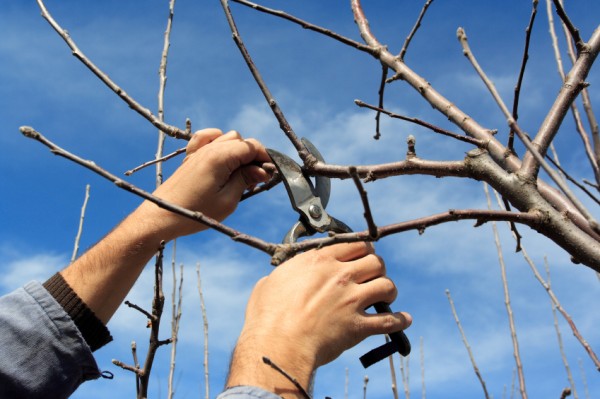
by Sheila Dunning | Dec 16, 2015
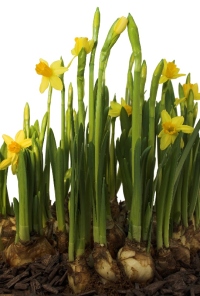
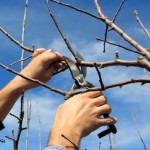 Though the calendar says December, the weather in Northwest Florida fluctuates between winter and spring temperatures. The nice days are wonderful opportunities to accomplish many of those outside landscape chores in preparation for spring. But, it is also a good time to start planning for next month’s colder temperatures. Since we don’t experience frozen soil, winter is the best time to transplant hardy trees and shrubs. Deciduous trees establish root systems more quickly while dormant; versus installing them in the spring with all their tender new leaves. Here are a few suggestions for tasks that can be performed this month:
Though the calendar says December, the weather in Northwest Florida fluctuates between winter and spring temperatures. The nice days are wonderful opportunities to accomplish many of those outside landscape chores in preparation for spring. But, it is also a good time to start planning for next month’s colder temperatures. Since we don’t experience frozen soil, winter is the best time to transplant hardy trees and shrubs. Deciduous trees establish root systems more quickly while dormant; versus installing them in the spring with all their tender new leaves. Here are a few suggestions for tasks that can be performed this month:
- Plant shade trees, fruit trees, and evergreen shrubs.
- Plant pre-chilled daffodil and narcissus bulbs (late December/early January).
- Do major re-shaping of shade trees, if needed, during the winter dormancy.
- Water live Christmas trees as needed and water holiday plants such as poinsettias as needed.
- Check houseplants for insect pests such as scale, mealy bugs, fungus gnats, whitefly and spider mites.
- Continue to mulch leaves from the lawn. Shred excess leaves and add to planting beds or compost pile.
- Replenish finished compost and mulch in planting beds, preferably before the first freeze.
- Switch sprinkler systems to ‘Manual’ mode for the balance of winter.
- Water thoroughly before a hard freeze to reduce plants’ chances of damage.
- Water lawn and all other plants once every three weeks or so, if supplemental rainfall is less than one inch in a three week period.
- Fertilize pansies and other winter annuals as needed.
- Protect tender plants from hard freezes.
- Be sure to clean, sharpen and repair all your garden and lawn tools. Now is also the best time to clean and have your power mower, edger and trimmer serviced.
- Be sure the mower blade is sharpened and balanced as well.
- Provide food and water to the area’s wintering birds.
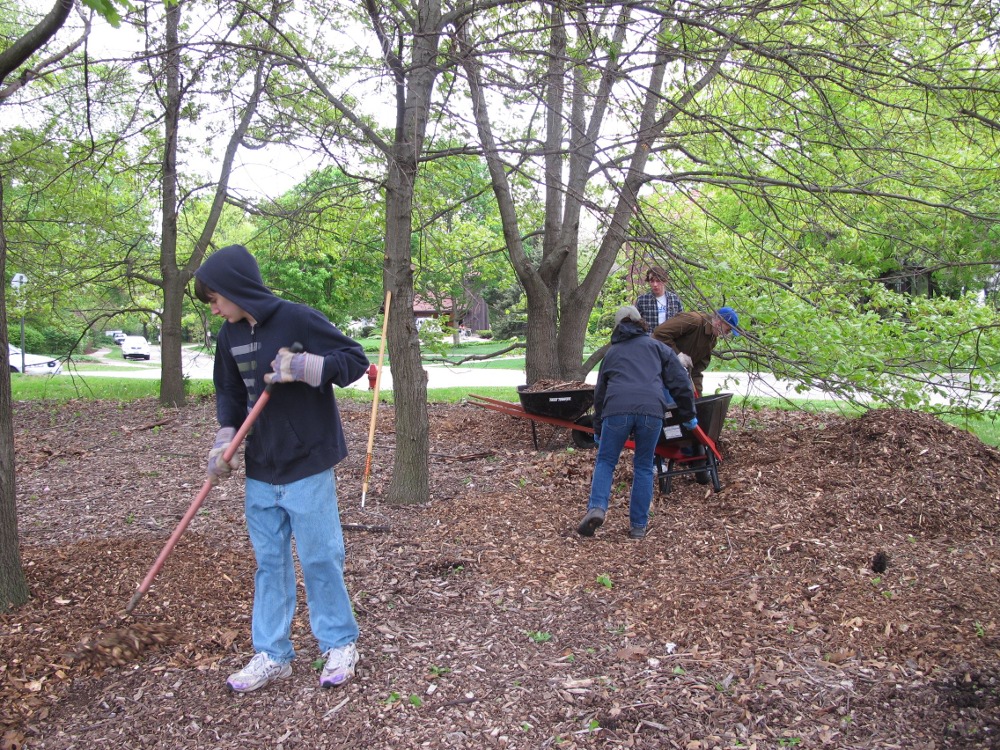
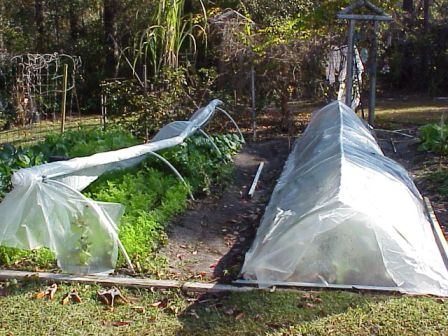
by Eddie Powell | Jan 22, 2015
Florida homeowners enjoy a wide range of landscape and citrus plants and often times desire a tropical or semitropical appearance to their landscapes. Many landscape plants are often planted past their northern limit such as here in Northwest Florida, although microclimates differ dramatically. Tropical and subtropical plants can be used in the landscape, but they must be protected or replaced if necessary during cold weather. A good variety of tender and hardy plants should be planted in order to prevent total devastation of the landscape by extremely cold weather.
The site selection for tender plants should be number one on your list when preparing for a freeze. Tender ornamental plants need a higher site with good air drainage, and not in a low area where cold air settles. Arranging tender plants along fences or other barriers to protect them from cold winds improves the plants’ cold protection, especially from very hard freezes.
Poorly drained soils result in weak shallow roots which are more susceptible to cold injury. Plants grown with the correctly applied rate of nutrients will tolerate colder temperatures better and recover from cold injury faster than plants grown with little or no added nutrients. Be aware that late fall fertilizing of nutrient deficient plants or fertilization before unseasonably warm periods can result in a late growth which is more susceptible to cold injury.
Ornamental plants that are planted under large tree canopies can have more cold protection and require less cold prevention for the owner.
Watering landscape plants before a freeze can help protect plants. A well watered soil will absorb more solar radiation than dry soil and will reradiate heat during the night by as much as 2°F . However, saturated soil conditions can damage the root systems of most plants over a few days, so make sure the ground is well drained.
Avoid late summer or early fall pruning which can alter the plant hormonal balance resulting a flush of new growth. This new growth is more susceptible to cold injury. Healthy plants are more resistant to cold than plants weakened by disease, insect damage, or nematode damage. Routine inspection for pests and implementation of necessary control measures are essential.
Here are a few methods for plant protection. Plants in pots or containers must be moved indoors where heat can be available to them. Containers that have to be left outdoors should be protected by mulches around the container or root ball of plants in the landscape to reduce heat loss from container sidewalls.
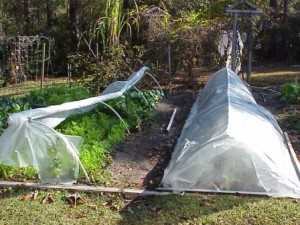
Cold Protection for Veggies!
Coverings can help protect plants more from frost than from extreme cold. Covers that extend to the ground and are not in contact with plant foliage can lessen cold injury to the plant. Foliage in contact with the cover is often cold burned or injured because of heat transfer from the foliage to the colder cover. Some examples of excellent plant covers are cloth sheets, quilts or black plastic. If plastic covering is used, it is extremely important to remove the covering during the day to provide ventilation of trapped heat. A light bulb under a covering also is a simple method of providing heat to ornamental plants in the landscape during the night hours.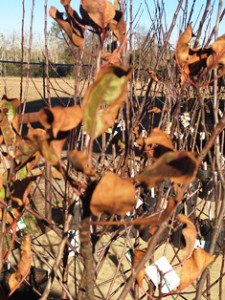 Cold Damage on Fruit Tree
Cold Damage on Fruit Tree
Pictures By Eddie Powell
Immediately after the frigid weather has passed, plants need to be checked for water loss. The foliage could be losing water vapor or transpiring on a sunny day after a freeze while water in the soil or container medium is frozen. Apply water to thaw the soil and provide available water for the plant. Soils or media with high soluble salts should not be allowed to dry out because salts would be concentrated into a small volume of water and can burn plant roots. Root burn can cause the roots to dry out and not take up water to the plant.
Pruning should be delayed until freezing temperatures have risen or until new growth appears to ensure that live wood is not removed. Dead, unsightly leaves may be removed as soon as they turn brown after a freeze if a high level of maintenance is desired. But it is best to wait until the threat of freezing weather is gone. Cold injury may appear as a lack of spring bud break on a portion or all of the plant, or as an overall weak appearance. Cold injury is usually found in the upper portion of the plant. Branch tips may be damaged while older wood underneath is free of injury. Cold injured wood can be identified by examining the cambium layer under the bark for black or brown coloration. Prune these branches back to a bud 2-3 inches behind the point of discoloration.
For more information on freeze protection of plants see:
Cold Protection of Landscape Plants
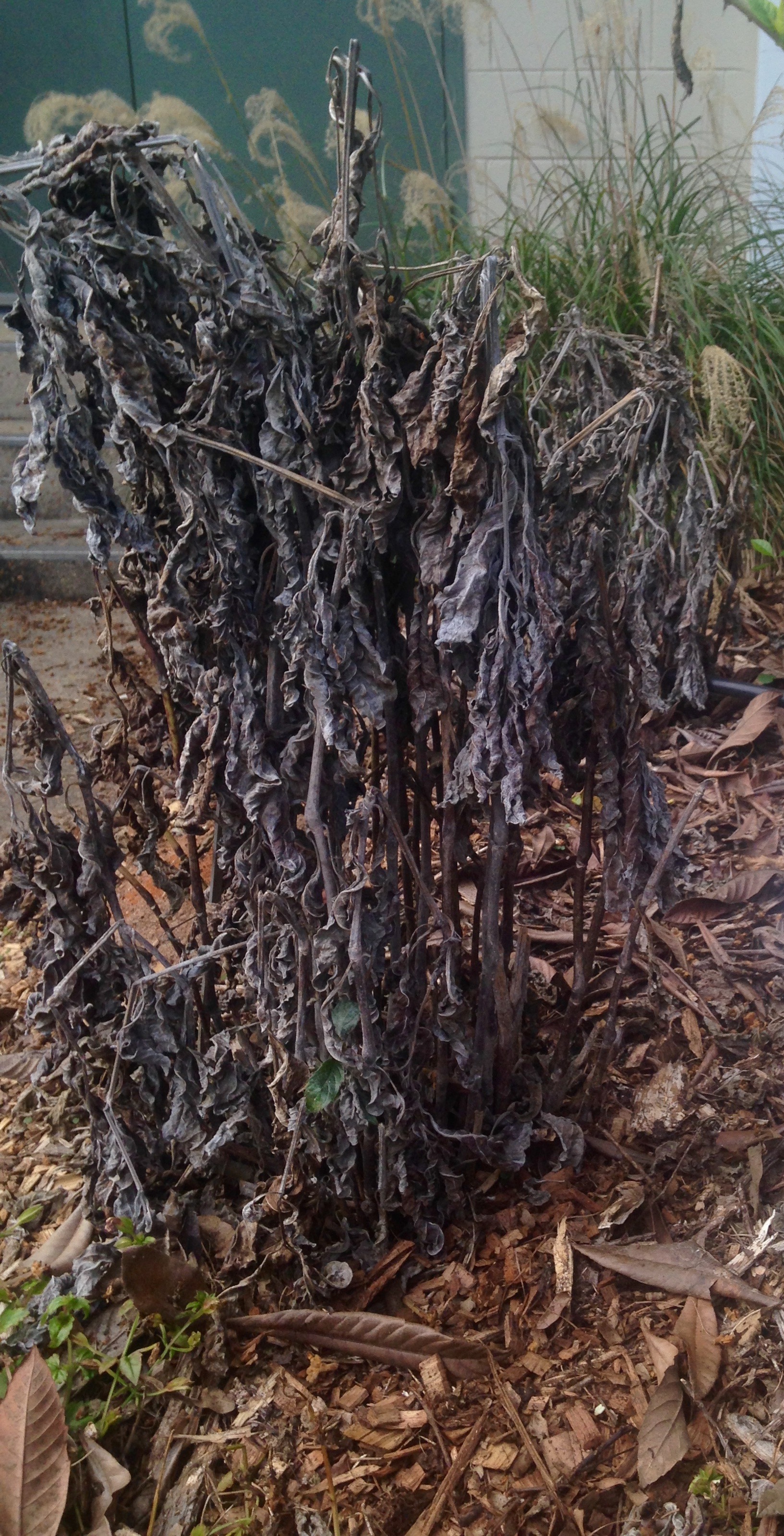
by Sheila Dunning | Dec 23, 2014
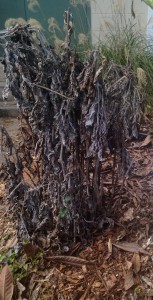
A frozen perennial plant. Photo credit: Taylor Vandiver UF/IFAS Extension.
When you look out at your landscape nobody has to tell you that winter temperatures in Northwest Florida Afterwards, the temperatures warm up and you feel compelled to do something about it. You just need to “turn your back and slam the door”. “Conceal, don’t feel; don’t let them know”. Cold injury can affect the entire plant or just certain plant or parts such as fruits, flowers, buds, leaves, trunks, stems, or roots. Many plant parts can adapt to tolerate cold. Root systems in the landscape are seldom ‘frozen’ in Florida. “The cold never bothered” them “anyway”. While dead, unsightly leaves may be removed as soon as they turn brown after a freeze, the remaining dry looking stems serve as food storage and should be allowed to remain. If they are removed before the weather is warm enough for the plant to resume growth, the root system may not be enough to support the plant and it will die. So, “let it go, let it go, let it go”. “The perfect” landscape “is gone”. “The past is in the past”. “It’s funny how some distance makes everything seem so small”.Tropical plants and summer annuals do not adapt or harden to withstand temperatures below freezing, and many suffer injury at temperatures below 50°F (10°C). Subtropical plants can harden or acclimate (become accustomed to a new climate) to withstand freezing temperatures, and properly conditioned temperate plants can withstand temperatures substantially below freezing.
Recently planted, unestablished plants may be more susceptible to cold injury. One type of winter injury is plant desiccation or drying out. This is characterized by marginal or leaf tip burn in mild cases and totally brown leaves in severe cases. Desiccation occurs when dry winds and solar radiation result in the loss of more water from the leaves than can be absorbed and/or transported by a cold root system. Plant water needs should be checked after a freeze. Plants may have lost substantial moisture during a windy freeze. Plants will transpire (lose water vapor) on a sunny day after a freeze. Cold injured wood can be identified by lightly scraping the bark with your fingernail and examining the color of the cambium layer (food conducting tissue) just underneath. Green tissue indicates the plant is still alive at that point; black or brown coloration indicates dead or injured tissue. 
After a particularly harsh cold event, some plants may be very slow to recover, so some patience is required. “It will rise” with “the break of spring”. Branch tips may be damaged while older wood is free of injury. Delay pruning until new growth appears next spring to ensure that live wood is not removed. In the meantime, take Elsa’s advice and “let it go, let it go, let it go”. You may be “too relieved to grieve”. I hope I haven’t infringed on any copyrights by letting you know “It’s okay to put off the yard work in the name of plant physiology”.
Enjoy the holiday season!
For more information please see:
Treating Cold Damaged Plants
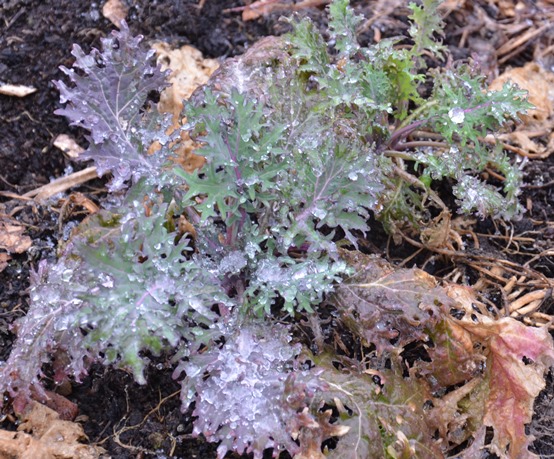
by Les Harrison | Dec 16, 2014

Some plants will handle freeze events, while other will wither and die. Advance preparation will improve chances of saving sensitive plants from subfreezing weather.
Panhandle Florida gardeners face a new set of challenges annually dealing with the effects of cold weather. A little planning and creativity can make plant protection in the landscape successful.
Many homeowners and landscape managers want to know when plants will need protection. Depending on the plant, a frost warning is a good rule of thumb.
Note there is a difference in the terms used for cold weather conditions. Frost, freeze and hard freeze all describe different circumstances.
Frost is when water vapour freezes on surfaces. It happens on clear nights with still air and may even happen when temperatures are above freezing.
Freezing is when cold air moves in and causes temperatures to drop below 32 degrees Fahrenheit. This condition commonly involves low humidity and wind, making drying out a big problem for plants.
A hard freeze is when temperatures dip below 28 degrees Fahrenheit. Many tropical plants and fruit trees will survive a few degrees below freezing for brief periods, but extended periods of freeze or heavy frost may require lights or other heat used safely with a cover.
Many time freeze damage happens during the busy holiday season. People are busy, schedules are disrupted and the distractions, pleasant thought they be, may cause homeowners to miss a freeze alert.
A few simple actions can save these “green” friends for another year’s enjoyment. Some plants can be moved indoors for the winter and incorporated into the interior décor, rather than cramming them last-minute into a clutter when a freeze looms.
Identify old sheets, blankets and drop cloths which can be used as covers for tender plants which must remain outside. Test potential covers beforehand to assure all plants are thoroughly covered.
It is best if the covers enclose the plant entirely without crushing it. Heavy blankets are great insulation, but only a good idea on sturdy plants.
A tomato cage or other support structure can be used to keep weight off the plant. Covers also need to be secured at the ground with pins or weights to assure cold air does not creep in from below.
Finally, keep storage bins handy and remove the covers in the daytime if temperatures are above 55 degrees Fahrenheit.
Monitor weather reports and react accordingly so tender and tropical plants see another spring in a few more months.
To learn more about protecting delicate plants, see “Cold Protection for Landscape Plants”.

by Eddie Powell | Nov 17, 2014
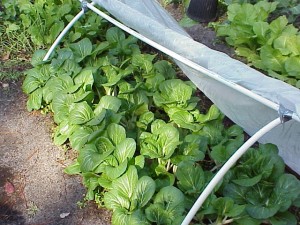
Northwest Florida homeowners enjoy growing their own vegetables every fall, but are faced with cold weather issues, especially during the first few days of December. For example, most cole crops can be planted until November, but they must be protected from the cold weather or they will need to be replaced. A good variety of cold tolerant plants should be used in order to prevent total devastation of the garden by extremely cold weather.
Below are a few tips to assist the home gardener in growing a successful winter vegetable crop.
- For tender plants, site selection should the top priority when preparing for a freeze. Vegetable plants need a site with good air drainage; not in a low area where cold air settles. Arranging tender plants along a barrier to protect them from cold winds improves the plants cold protection, especially from very hard freezes.
- Poorly drained soils result in weak and shallow roots which are more susceptible to cold injury.
- Plants grown with the correctly applied rate of nutrients will tolerate colder temperatures better and recover from cold injury faster than plants grown with little to no nutrients.
- Watering vegetable garden plants before a freeze can help protect plants. A well watered soil will absorb more solar radiation than dry soil and will radiate heat during the night. This may increase cold tolerance by as much as 2°F.
- Saturated soil conditions can damage the root systems of most plants over a few days, so make sure the ground is well-drained.
- Healthy vegetable plants are more resistant to cold than vegetable plants weakened by disease, insect damage, or nematode damage. Routine inspection for pests and implementation of necessary control measures are essential.
- Plastic or cloth coverings can help protect vegetable plants more from frost than from extreme cold. Covers that extend to the ground and are not in contact with the vegetable plants foliage will reduce cold injury. If the vegetable plant foliage is in contact with the cover it is often cold burned or injured because of heat transfer from the foliage to the colder cover. Some examples of excellent plant covers are cloth sheets, quilts or black plastic. If plastic covering is used, it is extremely important to remove the covering during the day to provide for ventilation of trapped heat.
- Feel free to contact your local county extension office for information on cold protection, pest identification and recommended control measures.


 Though the calendar says December, the weather in Northwest Florida fluctuates between winter and spring temperatures. The nice days are wonderful opportunities to accomplish many of those outside landscape chores in preparation for spring. But, it is also a good time to start planning for next month’s colder temperatures. Since we don’t experience frozen soil, winter is the best time to transplant hardy trees and shrubs. Deciduous trees establish root systems more quickly while dormant; versus installing them in the spring with all their tender new leaves. Here are a few suggestions for tasks that can be performed this month:
Though the calendar says December, the weather in Northwest Florida fluctuates between winter and spring temperatures. The nice days are wonderful opportunities to accomplish many of those outside landscape chores in preparation for spring. But, it is also a good time to start planning for next month’s colder temperatures. Since we don’t experience frozen soil, winter is the best time to transplant hardy trees and shrubs. Deciduous trees establish root systems more quickly while dormant; versus installing them in the spring with all their tender new leaves. Here are a few suggestions for tasks that can be performed this month:









